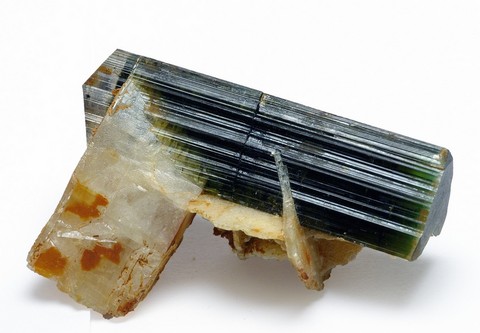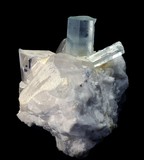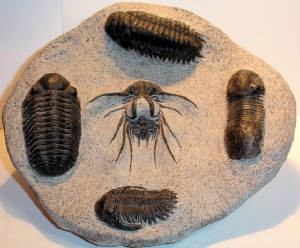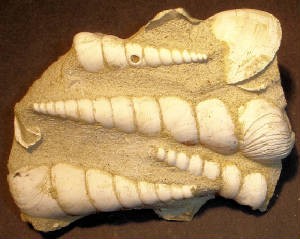 Glues and hardeners
Glues and hardeners
Let's talk a little about something very common on all kinds of specimens, both mineralogical and paleontological : glue !
Regluing :
Because discovery sites are often difficult to access, or because extraction is difficult (whether carried out with a hammer/chisel or using mechanized equipment), it is common for specimens to be found. break during harvesting or become cracked or fractured. Also, in order to reconstruct broken specimens, many amateurs and professionals simply use glue to repair their findings (or possibly a clumsiness linked to handling a part). Regluing is common in the world of collecting, among the glues used: cyanolite. Cyanolite or cyanoacrylate (superglue) is easily found commercially and is easy to apply. Some broken crystals or fossils are thus repaired very quickly. Detecting regluing can be very tricky... if the regluing is carried out on a fresh break, it can be completely invisible blending in perfectly with the small natural cracks in the specimen...
However, there are clues that allow us to identify a regluing as such :
- Visible excess glue
- Whitish traces : they are linked to the use of cyanolite in a humid environment
- Break in the symmetry of a face, a cleavage or a striation
- Visible fracture of a crystal completely intersecting said crystal without following a natural cleavage plane.
- Fluorescence : certain low-end glues, used in particular in Brazil, Morocco, China, etc... are UV fluorescent, so it becomes easy to highlight them using a UV lamp.
You should know that most glues dissolve in acetone, so the glues are easily reversible. Furthermore, acicular minerals traveling from one end of the planet to the other are most often stuck to the bottom of Tupperware so as not to arrive in crumbs...
It should be noted that museums and institutions also very often use glue to restore specimens from Natural Sciences collections. The glue most used by museums is not cyanolite but gum arabic which simply dissolves in water and which can be purchased in craft stores in jars of small amber pieces to dissolve yourself.
Regluing, however legitimate it may be, must always be clearly indicated during an exchange or sale. The impact on value is relatively significant.
Consolidation and impregnation :
The extraction of certain specimens may result in the appearance of numerous cracks in the parent rock. Likewise, certain materials are naturally not consolidated (falun shells for example), or are very porous. Thus their handling or their release is made delicate, it is difficult to preserve these specimens which crumble over the years or risk breaking at any time... In order to save them, the cracks are often injected with glue. The glue penetrates the crack by simple capillarity and polymerizes inside. Crack injection is very rarely reported, probably because its objective is to ensure the durability of the sample without “improving” its external shape. The impact on value is almost zero.
Impregnation makes it possible to “harden” a specimen which would tend to dislocate. It is often used on fragile fossils. It consists of soaking a very fractured or very porous rock in a solvent mixed with glue or a hardener (resin or plastic). As it dries, the glue or hardener fills the gaps in the rock. Impregnations are, for the same reasons as injections, rarely reported... The impact on the value is low.
An injection or impregnation can be difficult to spot and difficult to separate from rebonding. Some hardeners, however, have very persistent artificial odors.
Once again, acetone easily dissolves most glues and hardeners used, in theory this treatment is therefore reversible. In practice, however, glues tend to swell in their solvent, their dissolution can thus completely ruin a specimen (same effect as gel on a wet stone).
Attention :
Injections and impregnations of crystals or gems with substances aimed at improving their color or clarity are very common on emeralds, fluorites, sapphires, rubies, turquoise and even jade. They will be treated in another article, their objective often being to improve the external appearance and at the same time the marketability of the specimens.
Reconstitution or reconstruction :
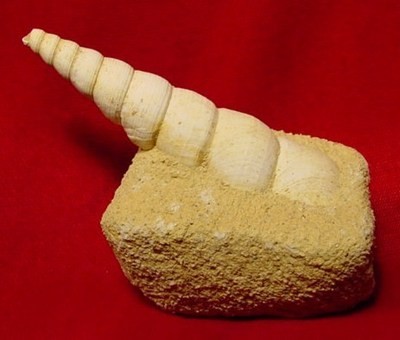
Reconstruction is the artificial fabrication of a missing or absent part, generally of a matrix but also directly of a fossil. The missing part is made most of the time from crushed matrix mixed with a binder (glue most often, but also plastic or resin), the mixture is applied like cement and after polymerization it can be reworked (or even dyed). Reconstructions can be very difficult to highlight... and must be reported, their impact on value is significant.
Opposite, a photo of a specimen of fossil turritella from the Aquitain Basin sold on eBay and whose matrix has been reconstructed (this was not specified in the ad)...
Assembly :
An assemblage is a specimen artificially made from several natural crystals or fossils grouped together using different techniques in a position that is not their original position, most of the time with the aim of deceiving their purchaser. The assemblages often imitate paragenesis or associations that we encounter in the natural state.
Among the most beautiful examples we can cite groups of Moroccan trilobites and vertebrates (photo bottom center), pyritized ammonites from Eastern Europe, Pakistani pegmatite minerals including aquamarines, fluorines, muscovites, tourmalines , sphenes (photo bottom left), the shells of French faluns (photo bottom right), galena geodes from Morocco, etc...
Generally the assemblages are crude and inexpensive, but we must always keep in mind that a specimen may have been intelligently constructed, we have seen cases for pink fluorines from Mont-Blanc on smoky quartz or wulfenites from Farges ... samples normally reserved for informed collectors... The impact on value is very significant !
An assembly must always be presented, sold or exchanged as such!

